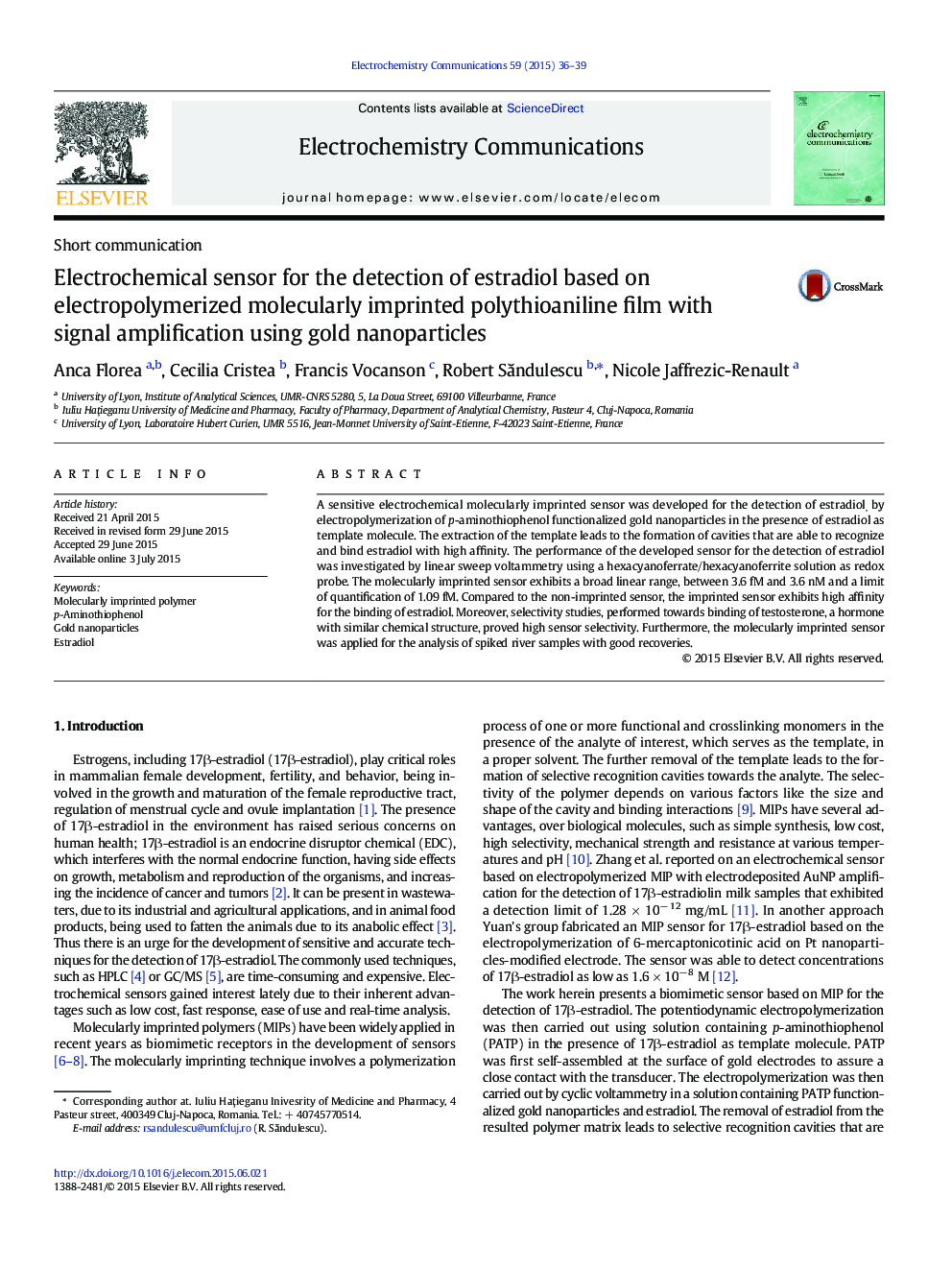| Article ID | Journal | Published Year | Pages | File Type |
|---|---|---|---|---|
| 178860 | Electrochemistry Communications | 2015 | 4 Pages |
•A sensitive electrochemical molecularly imprinted sensor was developed for the detection of estradiol•The MIP modified sensor was prepared by potentiodynamic electropolymerization•The p-aminothiophenol functionalized gold nanoparticles in the presence of estradiol was used to prepare the MIP film•A limit of quantification of 1.09 fM was obtained
A sensitive electrochemical molecularly imprinted sensor was developed for the detection of estradiol, by electropolymerization of p-aminothiophenol functionalized gold nanoparticles in the presence of estradiol as template molecule. The extraction of the template leads to the formation of cavities that are able to recognize and bind estradiol with high affinity. The performance of the developed sensor for the detection of estradiol was investigated by linear sweep voltammetry using a hexacyanoferrate/hexacyanoferrite solution as redox probe. The molecularly imprinted sensor exhibits a broad linear range, between 3.6 fM and 3.6 nM and a limit of quantification of 1.09 fM. Compared to the non-imprinted sensor, the imprinted sensor exhibits high affinity for the binding of estradiol. Moreover, selectivity studies, performed towards binding of testosterone, a hormone with similar chemical structure, proved high sensor selectivity. Furthermore, the molecularly imprinted sensor was applied for the analysis of spiked river samples with good recoveries.
Graphical abstractFigure optionsDownload full-size imageDownload as PowerPoint slide
